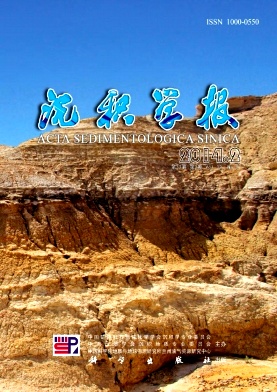Paleogeography of Middle Cambrian and Origin of Dolomites in the Middle-Upper Yangtze Plate
- Publish Date: 2014-04-10
-
Key words:
- Middle-upper Yangtze plate /
- Middle Cambrian /
- lagoon /
- origin of dolomites
Abstract: Using data of measured and observed outcrop successions, drilling information and predecessors' research achievements, lithofacies palaeogeography and the origin of dolomites of Middle Cambrian in the Middle-upper Yangtze plate were studied. lithofacies paleographic map was plotted based on comprehensive study on outcrops, wells and a series of contour maps, such as thickness of Middle Cambrian, thickness percentage of micritic dolomites, thickness of gypsum rocks and so on. In Middle Cambrian of Middle-upper Yangtze plate, from ancient land to deep sea basin(northwest to southeast)developed shallow fine-grained clastic continental shelf, restricted carbonate platform, slope and deep-sea basin. As the ancient land was low and gentle in Middle Cambrian, the sediments were fine-grained, such as sand, silt and mud. Restricted carbonate platform could be divided into different secondary paleogeography units, such as tidal flats, lagoons, particle beaches and so on. The slope in the east of the study area was gentle and the sediments were mainly micrite carbonate sediments and mud, and sediments in deep sea basin were black chert and mud. Sediments in restricted carbonate platform were gypsum and microcrystalline carbonate sediments. Origin of dolomites, sequences in plane and vertical successions were controlled by paleogeography. Layers of gypsum were Interbedded with dolomites, and little particle beach developed in interior platform, while lagoon, tidal flat, restricted subtidal zone developed. At the margin of Middle-Upper Yangtze platform, more particle beaches developed and layers of gypsum decreased. According to crystal sizes of dolomites, micritic dolomites were separated from sugar shaped dolomites (fine-grained dolomites, medium dolomites and coarse-grained dolomites). Micritic dolomites were formed in penecomtemporaneous diagenetic stage in tidal flat environments, with mechanism of evaporative pumping. High salinity fluid with abundant magnesium that dolomitization needed came from concentrated seawater in lagoon and normal salinity water of open platform. Sugar shaped dolomites were formed with the mechanism of seepage reflection, the high salinity fluid of which came from redundant fluid of evaporative pumping and lagoon. Seepage reflection went on slowly and coarse-grained dolomites were formed. In addition, mechanisms of dolomitization combined in three-dimensional space, and vertical sequence changed regularly. From top to bottom, micritic dolomites with no gypsum crystals, micritic dolomites with gypsum crystals, sugar shaped dolomites formed successively, which was affected by paleogeographic changes.
| Citation: | Paleogeography of Middle Cambrian and Origin of Dolomites in the Middle-Upper Yangtze Plate[J]. Acta Sedimentologica Sinica, 2014, 32(2): 244-252. |






 DownLoad:
DownLoad: